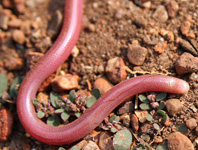Abstract
The immature stages of only one species of the dobsonfly genus Neoneuromus van der Weele are known. The final-instar larva and pupa of N. ignobilis Navás, 1932, the most common and widespread species of the genus, is herein described for the first time. Several morphological features of the larvae were found to distinguish N. ignobilis from other dobsonfly species with similar large-sized mature larvae.
References
Alzohairy, A.M. (2011) BioEdit: An important software for molecular biology. GERF: Bulletin of Biosciences, 2, 60–61.
Cao, C.Q. (2014) The current development and utilization and species definition of sand crawling worm in China. Hubei Agricultural Science, 53, 5061–5064.
Cao, C.Q. (2016) Rearing hellgrammites for food and medicine in China. Journal of Insects as Food and Feed, 2, 263–267.
https://doi.org/10.3920/JIFF2016.0009Cao, C.Q., Huang, M.Y., Qing, Y.T., Chen, S.Z., Huang, C.J. & Ge, Y.Y. (2011) Respiratory system and respiratory behaviors of the larva of Neoneuromus ignobilis. Chinese Journal of Applied Entomology, 2, 392–396.
Cao, C.Q. & Liu, X.Y. (2013) Description of the final-instar larva and pupa of Acanthacorydalis orientalis (McLachlan, 1899) (Megaloptera: Corydalidae) with some life history notes. Zootaxa, 3691 (1), 145–152.
https://doi.org/10.11646/zootaxa.3691.1.5Cao, C.Q., Tong, C., Chen, S.Z., Liu, Z.W. & Liu, X.Y. (2016) First description and bionomic notes for the final-instar larva and pupa of an Oriental dobsonfly species, Neoneuromus sikkimmensis (van der Weele, 1907) (Megaloptera: Corydalidae). Zootaxa, 4179 (2), 288–294.
https://doi.org/10.11646/zootaxa.4179.2.9Kimura, M. (1980) A simple method for estimating evolutionary rates of base substitutions through comparative studies of nucleotide sequences. Journal of Molecular Evolution, 16, 111–120.
https://doi.org/10.1007/BF01731581Liu, X.Y. & Yang, D. (2004) A revision of the genus Neoneuromus in China (Megaloptera: Corydalidae). Hydrobiologia, 517, 147–159.
https://doi.org/10.1023/B:HYDR.0000027343.41538.a1McLachlan R. (1899) A second Asiatic species of Corydalis. Transactions of the Entomological Society of London, 1899, 281–283.
https://doi.org/10.1111/j.1365-2311.1899.tb00984.xNavás, L. (1932) Decadas de insectos nuevos. Brotéria (Zoológica), 1, 145–155.
Simon, C., Frati, F., Beckenbach, A. Crespi, B., Liu, H. & Flook, P. (1994) Evolution, weighting, and phylogenetic utility of mitochondrial gene sequences and a compilation of conserved polymerase chain reaction primers. Annals of the Entomological Society of America, 87, 651–701.
https://doi.org/10.1093/aesa/87.6.651Tamura, K., Stecher, G., Peterson, D., Filipski, A. & Kumar, S. (2013) MEGA6: molecular evolutionary genetics analysis. Version 6.0. Molecular Biology and Evolution, 30, 272–2729.
https://doi.org/10.1093/molbev/mst197van der Weele, H.W. (1907) Notizen uber Sialiden und Beschreibung einiger neuen Arten. Notes from the Leyden Museum, 28, 227–264.
Woffelman, C. (2004) DNAMAN for Windows, Version 5.2.10. Lynon Biosoft, Institute of Molecular Plant Sciences. Leiden University, Leiden. [software]
Walker, F. (1853) Catalogue of the specimens of neuropterous insects in the collection of the British Museum. Part II (Sialides–Nemopterides). Newman, London, 284 pp. [pp. 193–476]
Yang, D. & Liu, X.Y. (2010) Fauna Sinica Insecta. Vol. 51. Megaloptera. Science Press, Beijing, 457 pp., XIV pls.

